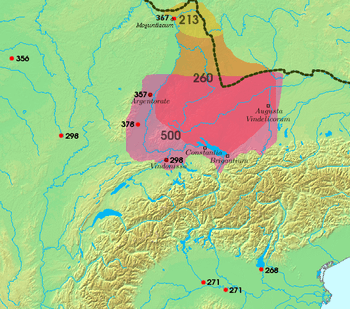233
| Millennium: | 1st millennium |
|---|---|
| Centuries: | 2nd century · 3rd century · 4th century |
| Decades: | 200s · 210s · 220s · 230s · 240s · 250s · 260s |
| Years: | 230 · 231 · 232 · 233 · 234 · 235 · 236 |
| 233 by topic | |
| Politics | |
| State leaders – Sovereign states | |
| Birth and death categories | |
| Births – Deaths | |
| Establishment and disestablishment categories | |
| Establishments – Disestablishments | |
| Gregorian calendar | 233 CCXXXIII |
| Ab urbe condita | 986 |
| Assyrian calendar | 4983 |
| Bengali calendar | −360 |
| Berber calendar | 1183 |
| Buddhist calendar | 777 |
| Burmese calendar | −405 |
| Byzantine calendar | 5741–5742 |
| Chinese calendar | 壬子年 (Water Rat) 2929 or 2869 — to — 癸丑年 (Water Ox) 2930 or 2870 |
| Coptic calendar | −51 – −50 |
| Discordian calendar | 1399 |
| Ethiopian calendar | 225–226 |
| Hebrew calendar | 3993–3994 |
| Hindu calendars | |
| - Vikram Samvat | 289–290 |
| - Shaka Samvat | 154–155 |
| - Kali Yuga | 3333–3334 |
| Holocene calendar | 10233 |
| Iranian calendar | 389 BP – 388 BP |
| Islamic calendar | 401 BH – 400 BH |
| Javanese calendar | 111–112 |
| Julian calendar | 233 CCXXXIII |
| Korean calendar | 2566 |
| Minguo calendar | 1679 before ROC 民前1679年 |
| Nanakshahi calendar | −1235 |
| Seleucid era | 544/545 AG |
| Thai solar calendar | 775–776 |
| Wikimedia Commons has media related to 233. |

Alemanni expansion
Year 233 (CCXXXIII) was a common year starting on Tuesday (link will display the full calendar) of the Julian calendar. At the time, it was known as the Year of the Consulship of Claudius and Paternus (or, less frequently, year 986 Ab urbe condita). The denomination 233 for this year has been used since the early medieval period, when the Anno Domini calendar era became the prevalent method in Europe for naming years.
Events
By place
Roman Empire
- Emperor Alexander Severus celebrates a triumph in Rome to observe his "victory" the previous year over the Persians. He is soon summoned to the Rhine frontier, where the Alamanni invade what is now modern day Swabia. German tribes destroy Roman forts and plunder the countryside at the Limes Germanicus.
Births
- Chen Shou, author of the Sanguo Zhi and general of the Kingdom of Shu (d. 297)
- Wang Rong (d. 305)
Deaths
- Budugen, Xianbei chieftain
- Yu Fan, minister of the Kingdom of Wu (b. 164)
References
This article is issued from Wikipedia - version of the 4/14/2016. The text is available under the Creative Commons Attribution/Share Alike but additional terms may apply for the media files.